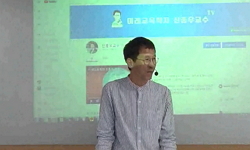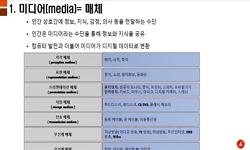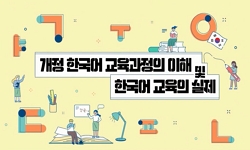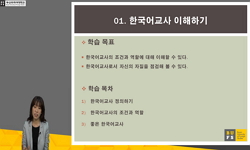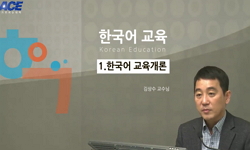The purpose of this study is to suggest a Korean language education program centered on learner participation for foreign learners who learn Korean language from the point of view of constructivism. To this end, we reviewed various Korean language edu...
http://chineseinput.net/에서 pinyin(병음)방식으로 중국어를 변환할 수 있습니다.
변환된 중국어를 복사하여 사용하시면 됩니다.
- 中文 을 입력하시려면 zhongwen을 입력하시고 space를누르시면됩니다.
- 北京 을 입력하시려면 beijing을 입력하시고 space를 누르시면 됩니다.
유튜브를 활용한 한국언어문화 교육 방안 : 현지 베트남 학습자를 중심으로 = Korean Language Culture Using YouTube Education plan : Focused on local Vietnamese learners
한글로보기https://www.riss.kr/link?id=T15499857
- 저자
-
발행사항
경산 : 대구가톨릭대학교 대학원, 2020
-
학위논문사항
학위논문(석사) -- 대구가톨릭대학교 대학원 , 국어국문학과 , 2020. 2
-
발행연도
2020
-
작성언어
한국어
- 주제어
-
발행국(도시)
경상북도
-
형태사항
v, 56 p. ; 26 cm
-
일반주기명
지도교수: 남경란
-
UCI식별코드
I804:47023-200000295194
- 소장기관
-
0
상세조회 -
0
다운로드
부가정보
다국어 초록 (Multilingual Abstract)
The purpose of this study is to suggest a Korean language education program centered on learner participation for foreign learners who learn Korean language from the point of view of constructivism. To this end, we reviewed various Korean language education plans and presented examples of Korean language classes using YouTube as one of the useful Korean language education programs that can enhance learner participation.
For foreign learners who are learning Korean, not all learners can learn in Korea where Korean is spoken.Even if you haven't been to Korea using Korean language, Korean language education using media gives learners the opportunity to learn Korean language and experience Korean culture indirectly through the media as an educational tool. In addition, since there are no materials that are closer to reality than the media, foreign learners can learn Korean language and culture quickly by learning Korean through the media.
The use of YouTube in this study consists of five stages: selecting a topic, watching YouTube videos related to the subject, performing direct and indirect experience tasks related to the subject, sharing impressions after the experience, and editing and uploading videos about class activities. For example, in the first stage, 'kimchi' is selected as the subject of Korean culture food. In the second stage, you can see the origin of Kimchi or cooking YouTube videos related to Kimchi. Afterwards, in the third stage, students are given a task such as eating or cooking kimchi directly. In the fourth step, learners will feel free to interview each other regarding kimchi in the next class, or interview with one-on-one questions and answers. In addition, learners learn vocabulary (eg cabbage kimchi, yeolmu kimchi, kimchi stew, spicy, salty). The last step is to edit the video (insert Korean subtitles) and upload it based on the class activity.All course progress is filmed and uploaded to YouTube for final editing. All course progress, including learners' faces, tone, and gestures, are filmed and uploaded to YouTube for final editing. Through this, learners can raise their attitude and participation more actively, and most importantly, if they use the videos that the students participated in as their teaching materials, the greatest advantage is that they will be able to do the Korean language. In fact, when the learners directly participated in the videos, the learning attitudes (active, participation) of the learners were significantly improved. Likewise, if all learners participate in the video directly, they will naturally have an interest in Korean and a leading learning attitude, and at the same time, it will be expected to have a great expectation effect on improving Korean language ability.
YouTube is a medium that can communicate in real time and can flexibly respond to technological changes, making it a very useful educational medium in that it can enable a new form of Korean language and culture education. In addition, it can be effective in improving learning outcomes through learner participation in that learners participate in the classroom, video editing is performed by instructors and learners, and immediate feedback is possible.
목차 (Table of Contents)
- I. 서론 1
- 1.1. 연구의 목적 1
- 1.2. 연구 내용 및 방법 2
- 1.3. 선행연구 검토 3
- Ⅱ. 이론적 배경 7
- I. 서론 1
- 1.1. 연구의 목적 1
- 1.2. 연구 내용 및 방법 2
- 1.3. 선행연구 검토 3
- Ⅱ. 이론적 배경 7
- 2.1. 구성주의와 언어 교육 7
- 2.1.1. 구성주의 교육의 개념 7
- 2.1.2. 구성주의 언어 교육의 효과 8
- 2.1.3. 학습자 참여형 한국어 수업의 구성 원리 10
- 2.2. 미디어 활용 한국어 교육 13
- 2.2.1. 교육에 있어서의 미디어의 개념과 역할 13
- 2.2.2. 한국어 수업에서의 미디어 활용 원리 이론 16
- Ⅲ. 미디어 기반 한국어 수업의 현황과 분석 21
- 3.1. 유튜브를 활용한 한국어 교육 21
- 3.2. 웹툰 및 만화를 활용한 한국어 교육 28
- 3.3. 웹 기반 한국어 교육 29
- 3.4. 드라마, 연극 등을 통한 한국어 교육 31
- 3.5. 뉴미디어를 통한 한국어 교육 33
- Ⅳ. 학습자 참여형 미디어 활용 한국어 수업 방안 35
- 4.1. 학습자 참여형 한국어 수업의 실례 35
- 4.1.1. 유튜브 학습 35
- 4.1.2. 유튜브를 활용한 한국어 교육의 실례 37
- 4.2. 유튜브를 활용한 한국어 교육 수업 지도 방안 41
- 4.3. 학습자 참여형 한국어 수업의 기대 효과 45
- V. 결론 49
- 참고문헌 51





